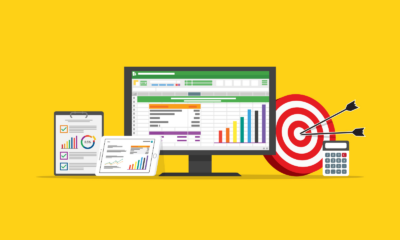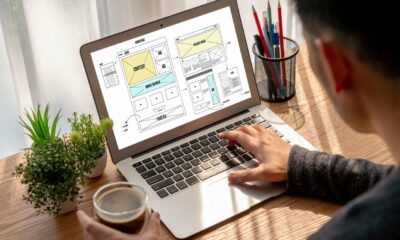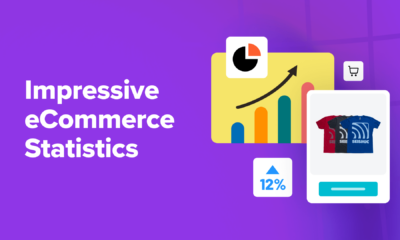SEO
5 Tips To Capture Last Minute Ecommerce Sales
Gift giving is like targeting in digital marketing. You’re attempting to “message map” the perfect gift based on what you know about the person while sticking to an agreed-upon budget.
For some, this is a delight, and they knock out all their shopping in the weeks (or months) leading up to Black Friday or Cyber Monday.
Then there’s the other 79%.
Klarna surveyed 40,000 U.S.-based shoppers who bought at least one gift during the holiday season and found that 79% waited till the last two weeks before Christmas to make their purchases.
As marketers, this is fantastic news, as it means our success or failure isn’t contingent on one really good weekend.
We can plant seeds throughout the holiday season and all year-round to entice shoppers to convert with last-minute campaigns.
To make the most of that buying behavior, we need to ensure a solid digital presence and operational infrastructure.
Consider these five strategies:
- Countdown to “Shipped In Time.”
- One-stop shopping.
- Product recommendations with gift cards.
- Charity add-ons.
- Gamifying upsells and lead capture.
While mostly focused on ecommerce/physical gifts your customers can buy, you can apply many of these lessons to local services.
1. Countdown To Shipped In Time
Creating a sense of urgency through countdowns is nothing new.
Timers can lead to an average 37.50% engaged conversion rate (sales) during the holiday season.
The biggest opportunity in countdowns is the time left to order for your gift to arrive in time.
In 2020, around 50% of those surveyed opted out of retail shopping due to health risks, so the reliability of presents arriving on time was even more important.
It’s important to remember countdowns need different applications depending on the channel.
For example, ads may do best when you give the user a specific number of days to complete the sale, while landing pages do better with hours and minutes.
Don’t be afraid to remind your subscriber list of their timelines to order in time for the holidays (or keep their basket).
2. Mobile-Friendly One-Stop Shopping
People don’t like working hard.
The easier the task, the more likely it is to be accomplished.
This is why many brands need to revisit their check-out flow ASAP!
Imagine adding 10 to 15 products to your cart, only to find out you have to do individual transactions.
This surely contributes to the 30% of carts abandoned (and $18 billion in revenue lost) because the user had to re-enter information.
Amazon is often seen as the 400lb guerilla in ecommerce, yet even they have a convoluted multi-shipping address workflow.
This is compounded by their below-average mobile experience (which makes it very easy to exit the process and be forced to start from the beginning).
While technically in the minority, smartphones accounted for 43% of orders in 2020.
We need to ensure the user experience doesn’t take a hit on mobile.
They go wrong (and you can go right) by requiring the user to add the addresses of the people they want to ship to before designating the shipping address for each present.
Compare that experience with FromYouFlowers.com, which allows you to manually enter the address (or pull from your address book if logged in).
Check-out pages are also a helpful spot to include a banner asking if the customer forgot anyone on their list.
Offering product suggestions for family members or people the prospect has historically bought presents for in the past is a great way to upsell without forcing a discount.
3. Coupling Product Recommendations With Gift Cards
Gift cards are the salvation of many a last-minute shopper, but many shoppers can feel guilt over the lack of personalization.
Good news for them (and brands capitalizing on late shoppers): 59% of wishlists include gift cards!
A powerful way to increase average order value (AOV) in gift cards is to allow customers to send product recommendations within the gift card amount.
This solves two really stressful problems in the shopping process:
- Shoppers can show they put thought into the purchase and didn’t just bulk send a bunch of gift cards to feel better.
- Gift receivers don’t have the hassle of returning a present they’re not in love with – they get to choose exactly what they want.
A great example of a brand doing this is Goody, which allows the shopper to “send” a gift through SMS/their app, but gives the recipient the chance to pick something else of equal value.
Consider using product recommendations or allow the person gifting the option to “pick” something that they can easily swap out.
This is a win-win for you and your customers: No additional operational overhead wasted on returns without the inconvenience of dealing with unwanted presents.
4. Charity Add-Ons
The holiday season is the biggest shopping season because it’s the season of giving.
In 2020, we saw a 49% increase in the average donation (including corporate matching programs).
Introducing the option to “round up” for donation purposes, adding on a stand-alone donation, or giving users a “free gift” donation when they spend a certain amount can be a powerful way to earn sales without overly discounting your products/services.
Amazon wins out on the “good company” study year after year because of its smile.amazon.com program.
A percentage of every sale goes to a nonprofit the customer specifies.
Applying this initiative to your brand doesn’t need to be a big undertaking.
Whether it’s partnering with tools like ShoppingGives.com or elevating your own passion organizations, consumers will appreciate doing good while treating their loved ones (or themselves) well.
5. Gamifying Upsells And Lead Capture
Almost two-thirds (65%) of customers wait for a sale to purchase.
Harness that need for saving while growing your average order value (AOV) and first-party data through on-site CRO.
Offering levels of savings (buy two items, save 10%; buy three, save 15%; etc.) will entice users to do most (if not all) of their holiday shopping with you.
Additionally, studies have shown that a 5% increase in user engagement can lead to an average of 75% revenue.
Gamification is the “easy button” for engagement because it transforms a tedious task into a fun activity.
Whether it’s “spin to win,” “scratch-off,” or another lead capture game, these campaigns can help drive sales and build a list to follow up with once the holiday season ends.
As you’re gifting out discounts and fun, you’re getting the gift of first-party data.
Final Takeaways
Last-minute conversions are particularly valuable during the holidays but this is a behavior you can tap into all year long.
Transparency in your ability to meet shipping deadlines and creating clever solutions for procrastinators can help you leverage your ecommerce channel to its fullest potential.
More resources:
Featured Image: DC Studio/Shutterstock
!function(f,b,e,v,n,t,s)
{if(f.fbq)return;n=f.fbq=function(){n.callMethod?
n.callMethod.apply(n,arguments):n.queue.push(arguments)};
if(!f._fbq)f._fbq=n;n.push=n;n.loaded=!0;n.version=’2.0′;
n.queue=[];t=b.createElement(e);t.async=!0;
t.src=v;s=b.getElementsByTagName(e)[0];
s.parentNode.insertBefore(t,s)}(window,document,’script’,
‘https://connect.facebook.net/en_US/fbevents.js’);
if( typeof sopp !== “undefined” && sopp === ‘yes’ ){
fbq(‘dataProcessingOptions’, [‘LDU’], 1, 1000);
}else{
fbq(‘dataProcessingOptions’, []);
}
fbq(‘init’, ‘1321385257908563’);
fbq(‘track’, ‘PageView’);
fbq(‘trackSingle’, ‘1321385257908563’, ‘ViewContent’, {
content_name: ‘last-call-ecommerce-tips’,
content_category: ‘strategy-digital ecommerce’
});
SEO
Google Rolls Out New ‘Web’ Filter For Search Results

Google is introducing a filter that allows you to view only text-based webpages in search results.
The “Web” filter, rolling out globally over the next two days, addresses demand from searchers who prefer a stripped-down, simplified view of search results.
Danny Sullivan, Google’s Search Liaison, states in an announcement:
“We’ve added this after hearing from some that there are times when they’d prefer to just see links to web pages in their search results, such as if they’re looking for longer-form text documents, using a device with limited internet access, or those who just prefer text-based results shown separately from search features.”
We’ve added this after hearing from some that there are times when they’d prefer to just see links to web pages in their search results, such as if they’re looking for longer-form text documents, using a device with limited internet access, or those who just prefer text-based…
— Google SearchLiaison (@searchliaison) May 14, 2024
The new functionality is a throwback to when search results were more straightforward. Now, they often combine rich media like images, videos, and shopping ads alongside the traditional list of web links.
How It Works
On mobile devices, the “Web” filter will be displayed alongside other filter options like “Images” and “News.”
If Google’s systems don’t automatically surface it based on the search query, desktop users may need to select “More” to access it.
 Screenshot from: twitter.com/GoogleSearchLiaison, May 2024.
Screenshot from: twitter.com/GoogleSearchLiaison, May 2024.More About Google Search Filters
Google’s search filters allow you to narrow results by type. The options displayed are dynamically generated based on your search query and what Google’s systems determine could be most relevant.
The “All Filters” option provides access to filters that are not shown automatically.
Alongside filters, Google also displays “Topics” – suggested related terms that can further refine or expand a user’s original query into new areas of exploration.
For more about Google’s search filters, see its official help page.
Featured Image: egaranugrah/Shutterstock
SEO
Why Google Can’t Tell You About Every Ranking Drop

In a recent Twitter exchange, Google’s Search Liaison, Danny Sullivan, provided insight into how the search engine handles algorithmic spam actions and ranking drops.
The discussion was sparked by a website owner’s complaint about a significant traffic loss and the inability to request a manual review.
Sullivan clarified that a site could be affected by an algorithmic spam action or simply not ranking well due to other factors.
He emphasized that many sites experiencing ranking drops mistakenly attribute it to an algorithmic spam action when that may not be the case.
“I’ve looked at many sites where people have complained about losing rankings and decide they have a algorithmic spam action against them, but they don’t. “
Sullivan’s full statement will help you understand Google’s transparency challenges.
Additionally, he explains why the desire for manual review to override automated rankings may be misguided.
Two different things. A site could have an algorithmic spam action. A site could be not ranking well because other systems that *are not about spam* just don’t see it as helpful.
I’ve looked at many sites where people have complained about losing rankings and decide they have a…
— Google SearchLiaison (@searchliaison) May 13, 2024
Challenges In Transparency & Manual Intervention
Sullivan acknowledged the idea of providing more transparency in Search Console, potentially notifying site owners of algorithmic actions similar to manual actions.
However, he highlighted two key challenges:
- Revealing algorithmic spam indicators could allow bad actors to game the system.
- Algorithmic actions are not site-specific and cannot be manually lifted.
Sullivan expressed sympathy for the frustration of not knowing the cause of a traffic drop and the inability to communicate with someone about it.
However, he cautioned against the desire for a manual intervention to override the automated systems’ rankings.
Sullivan states:
“…you don’t really want to think “Oh, I just wish I had a manual action, that would be so much easier.” You really don’t want your individual site coming the attention of our spam analysts. First, it’s not like manual actions are somehow instantly processed. Second, it’s just something we know about a site going forward, especially if it says it has change but hasn’t really.”
Determining Content Helpfulness & Reliability
Moving beyond spam, Sullivan discussed various systems that assess the helpfulness, usefulness, and reliability of individual content and sites.
He acknowledged that these systems are imperfect and some high-quality sites may not be recognized as well as they should be.
“Some of them ranking really well. But they’ve moved down a bit in small positions enough that the traffic drop is notable. They assume they have fundamental issues but don’t, really — which is why we added a whole section about this to our debugging traffic drops page.”
Sullivan revealed ongoing discussions about providing more indicators in Search Console to help creators understand their content’s performance.
“Another thing I’ve been discussing, and I’m not alone in this, is could we do more in Search Console to show some of these indicators. This is all challenging similar to all the stuff I said about spam, about how not wanting to let the systems get gamed, and also how there’s then no button we would push that’s like “actually more useful than our automated systems think — rank it better!” But maybe there’s a way we can find to share more, in a way that helps everyone and coupled with better guidance, would help creators.”
Advocacy For Small Publishers & Positive Progress
In response to a suggestion from Brandon Saltalamacchia, founder of RetroDodo, about manually reviewing “good” sites and providing guidance, Sullivan shared his thoughts on potential solutions.
He mentioned exploring ideas such as self-declaration through structured data for small publishers and learning from that information to make positive changes.
“I have some thoughts I’ve been exploring and proposing on what we might do with small publishers and self-declaring with structured data and how we might learn from that and use that in various ways. Which is getting way ahead of myself and the usual no promises but yes, I think and hope for ways to move ahead more positively.”
Sullivan said he can’t make promises or implement changes overnight, but he expressed hope for finding ways to move forward positively.
Featured Image: Tero Vesalainen/Shutterstock
SEO
56 Google Search Statistics to Bookmark for 2024

If you’re curious about the state of Google search in 2024, look no further.
Each year we pick, vet, and categorize a list of up-to-date statistics to give you insights from trusted sources on Google search trends.
- Google has a web index of “about 400 billion documents”. (The Capitol Forum)
- Google’s search index is over 100 million gigabytes in size. (Google)
- There are an estimated 3.5 billion searches on Google each day. (Internet Live Stats)
- 61.5% of desktop searches and 34.4% of mobile searches result in no clicks. (SparkToro)
- 15% of all Google searches have never been searched before. (Google)
- 94.74% of keywords get 10 monthly searches or fewer. (Ahrefs)
- The most searched keyword in the US and globally is “YouTube,” and youtube.com gets the most traffic from Google. (Ahrefs)
- 96.55% of all pages get zero search traffic from Google. (Ahrefs)
- 50-65% of all number-one spots are dominated by featured snippets. (Authority Hacker)
- Reddit is the most popular domain for product review queries. (Detailed)
- Google is the most used search engine in the world, with a mobile market share of 95.32% and a desktop market share of 81.95%. (Statista)


- Google.com generated 84.2 billion visits a month in 2023. (Statista)
- Google generated $307.4 billion in revenue in 2023. (Alphabet Investor Relations)
- 63.41% of all US web traffic referrals come from Google. (SparkToro)
- 92.96% of global traffic comes from Google Search, Google Images, and Google Maps. (SparkToro)
- Only 49% of Gen Z women use Google as their search engine. The rest use TikTok. (Search Engine Land)
- 58.67% of all website traffic worldwide comes from mobile phones. (Statista)
- 57% of local search queries are submitted using a mobile device or tablet. (ReviewTrackers)


- 51% of smartphone users have discovered a new company or product when conducting a search on their smartphones. (Think With Google)
- 54% of smartphone users search for business hours, and 53% search for directions to local stores. (Think With Google)
- 18% of local searches on smartphones lead to a purchase within a day vs. 7% of non-local searches. (Think With Google)
- 56% of in-store shoppers used their smartphones to shop or research items while they were in-store. (Think With Google)
- 60% of smartphone users have contacted a business directly using the search results (e.g., “click to call” option). (Think With Google)
- 63.6% of consumers say they are likely to check reviews on Google before visiting a business location. (ReviewTrackers)
- 88% of consumers would use a business that replies to all of its reviews. (BrightLocal)
- Customers are 2.7 times more likely to consider a business reputable if they find a complete Business Profile on Google Search and Maps. (Google)
- Customers are 70% more likely to visit and 50% more likely to consider purchasing from businesses with a complete Business Profile. (Google)
- 76% of people who search on their smartphones for something nearby visit a business within a day. (Think With Google)
- 28% of searches for something nearby result in a purchase. (Think With Google)
- Mobile searches for “store open near me” (such as, “grocery store open near me” have grown by over 250% in the last two years. (Think With Google)
- People use Google Lens for 12 billion visual searches a month. (Google)
- 50% of online shoppers say images helped them decide what to buy. (Think With Google)
- There are an estimated 136 billion indexed images on Google Image Search. (Photutorial)
- 15.8% of Google SERPs show images. (Moz)
- People click on 3D images almost 50% more than static ones. (Google)
- More than 800 million people use Google Discover monthly to stay updated on their interests. (Google)
- 46% of Google Discover URLs are news sites, 44% e-commerce, 7% entertainment, and 2% travel. (Search Engine Journal)
- Even though news sites accounted for under 50% of Google Discover URLs, they received 99% of Discover clicks. (Search Engine Journal)


- Most Google Discover URLs only receive traffic for three to four days, with most of that traffic occurring one to two days after publishing. (Search Engine Journal)
- The clickthrough rate (CTR) for Google Discover is 11%. (Search Engine Journal)
- 91.45% of search volumes in Google Ads Keyword Planner are overestimates. (Ahrefs)
- For every $1 a business spends on Google Ads, they receive $8 in profit through Google Search and Ads. (Google)
- Google removed 5.5 billion ads, suspended 12.7 million advertiser accounts, restricted over 6.9 billion ads, and restricted ads from showing up on 2.1 billion publisher pages in 2023. (Google)
- The average shopping click-through rate (CTR) across all industries is 0.86% for Google Ads. (Wordstream)
- The average shopping cost per click (CPC) across all industries is $0.66 for Google Ads. (Wordstream)
- The average shopping conversion rate (CVR) across all industries is 1.91% for Google Ads. (Wordstream)
- 58% of consumers ages 25-34 use voice search daily. (UpCity)
- 16% of people use voice search for local “near me” searches. (UpCity)
- 67% of consumers say they’re very likely to use voice search when seeking information. (UpCity)
- Active users of the Google Assistant grew 4X over the past year, as of 2019. (Think With Google)
- Google Assistant hit 1 billion app installs. (Android Police)
- AI-generated answers from SGE were available for 91% of entertainment queries but only 17% of healthcare queries. (Statista)
- The AI-generated answers in Google’s Search Generative Experience (SGE) do not match any links from the top 10 Google organic search results 93.8% of the time. (Search Engine Journal)
- Google displays a Search Generative element for 86.8% of all search queries. (Authoritas)


- 62% of generative links came from sources outside the top 10 ranking organic domains. Only 20.1% of generative URLs directly match an organic URL ranking on page one. (Authoritas)
- 70% of SEOs said that they were worried about the impact of SGE on organic search (Aira)
Learn more
Check out more resources on how Google works:
-

 PPC6 days ago
PPC6 days agoHow the TikTok Algorithm Works in 2024 (+9 Ways to Go Viral)
-

 SEO5 days ago
SEO5 days agoHow to Use Keywords for SEO: The Complete Beginner’s Guide
-

 MARKETING6 days ago
MARKETING6 days agoHow To Protect Your People and Brand
-

 MARKETING4 days ago
MARKETING4 days agoAdvertising on Hulu: Ad Formats, Examples & Tips
-

 MARKETING4 days ago
MARKETING4 days agoUpdates to data build service for better developer experiences
-

 MARKETING5 days ago
MARKETING5 days agoThe Ultimate Guide to Email Marketing
-

 MARKETING20 hours ago
MARKETING20 hours ago18 Events and Conferences for Black Entrepreneurs in 2024
-

 SEO7 days ago
SEO7 days agoAutomate Multi-Site Reporting With Google Sheets And GSC API














You must be logged in to post a comment Login